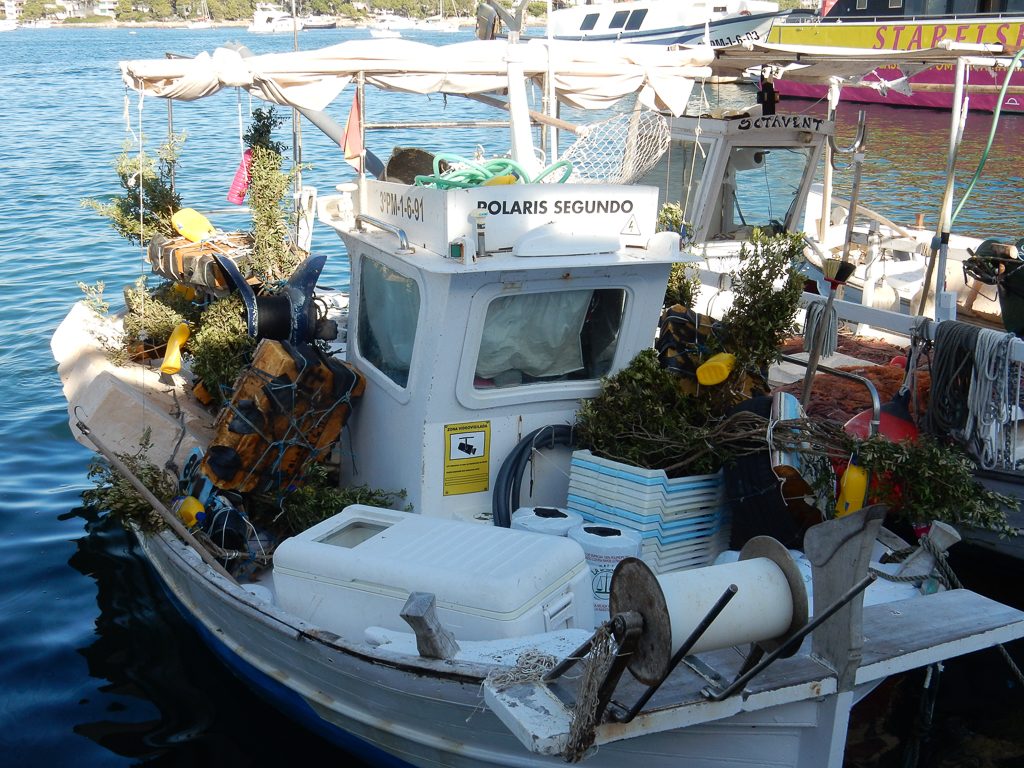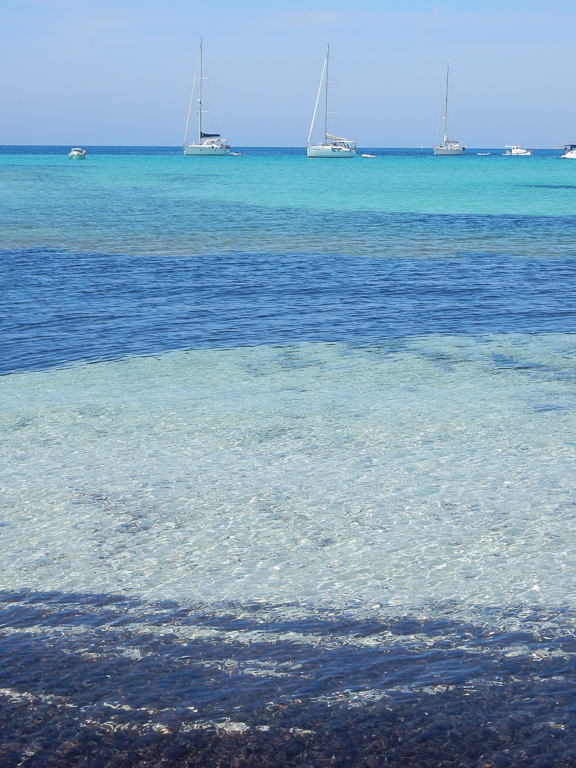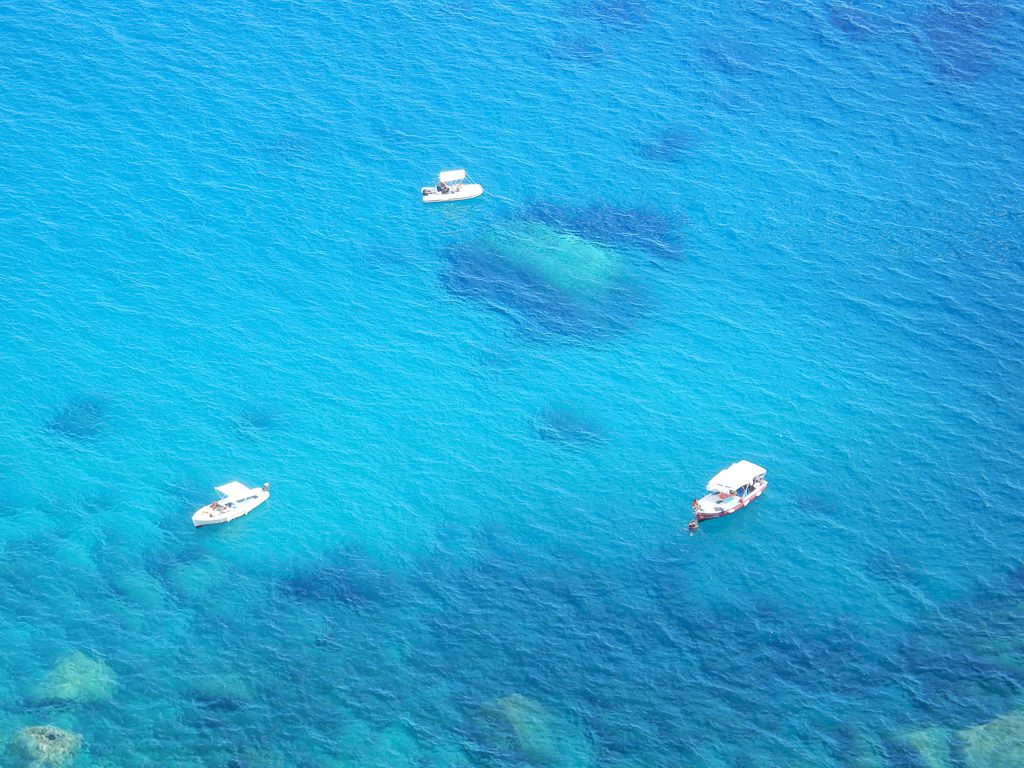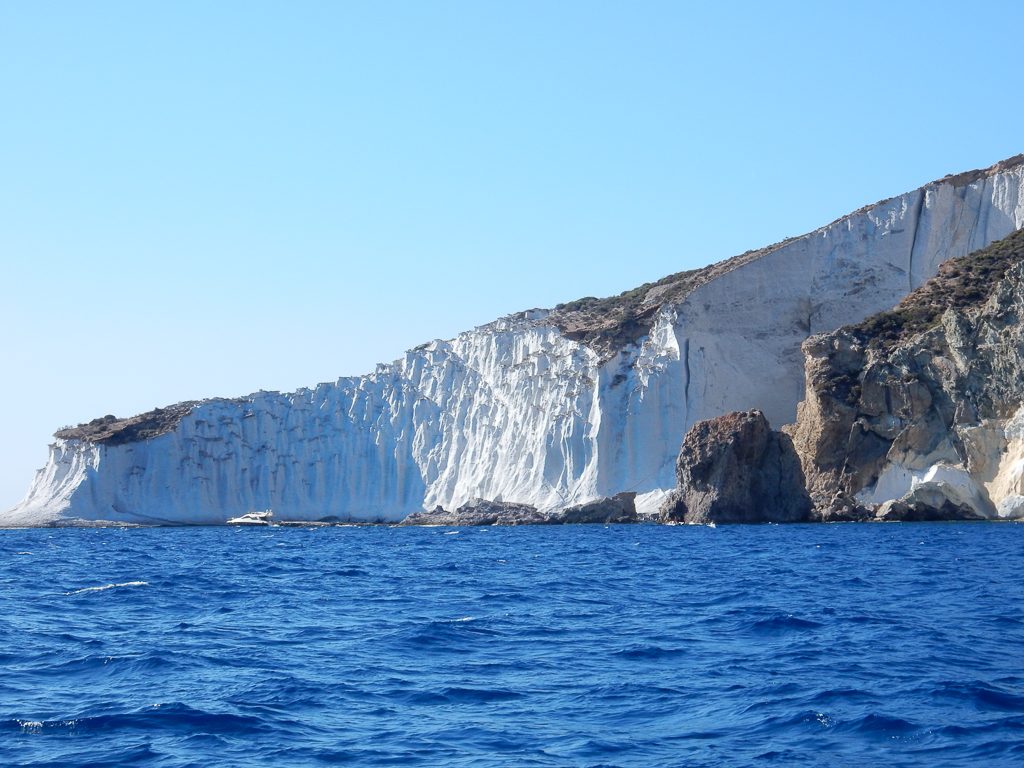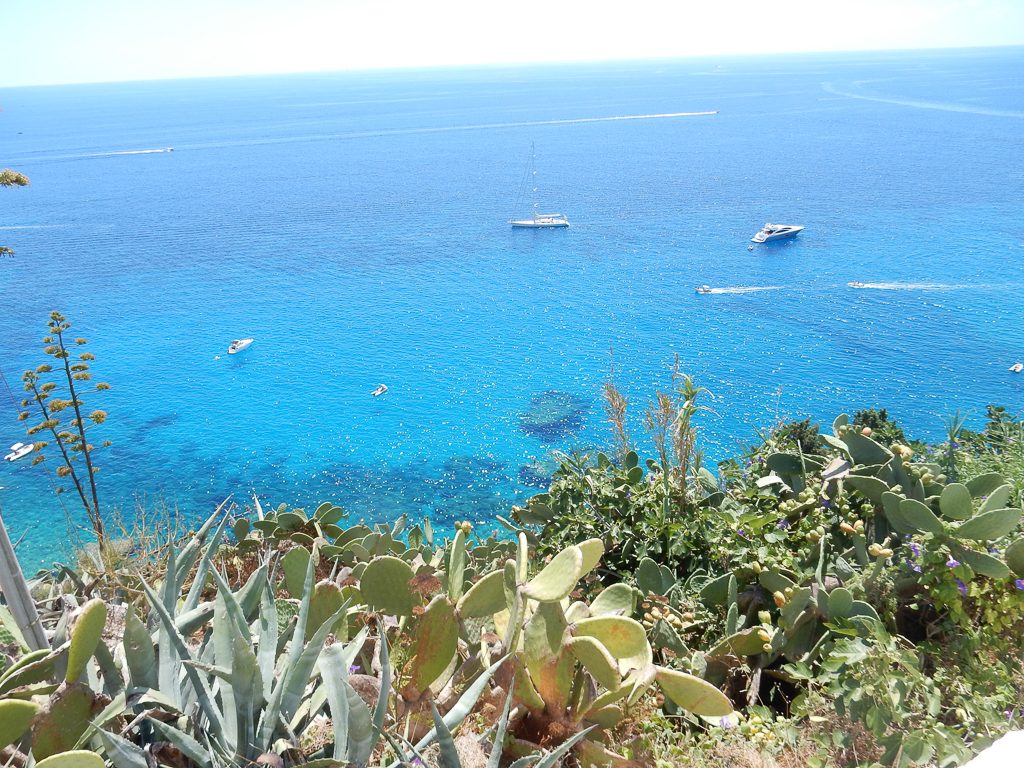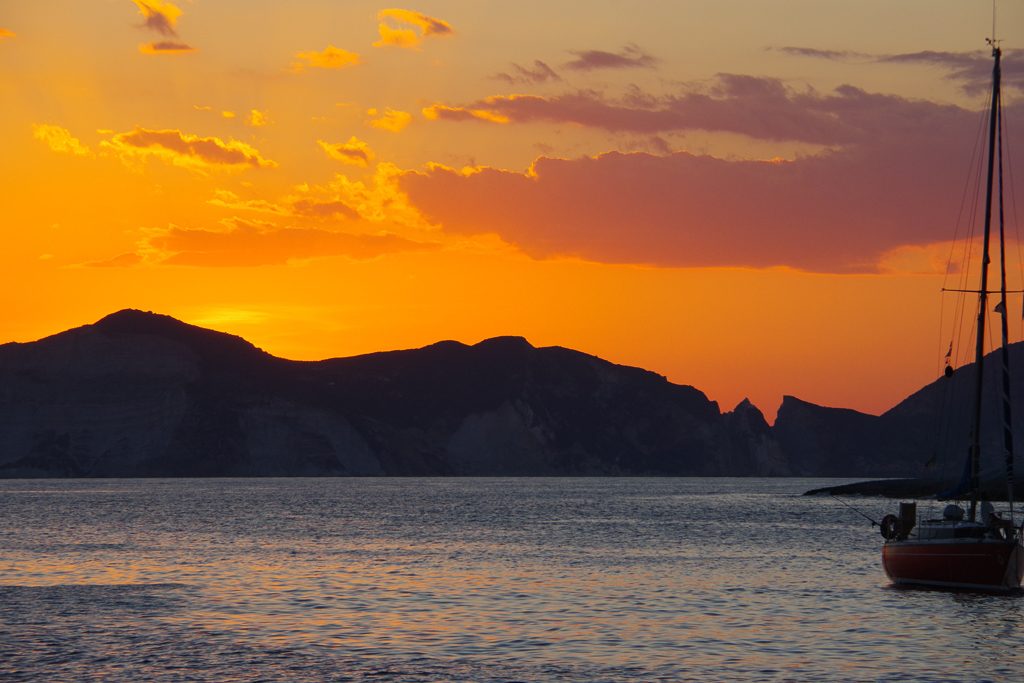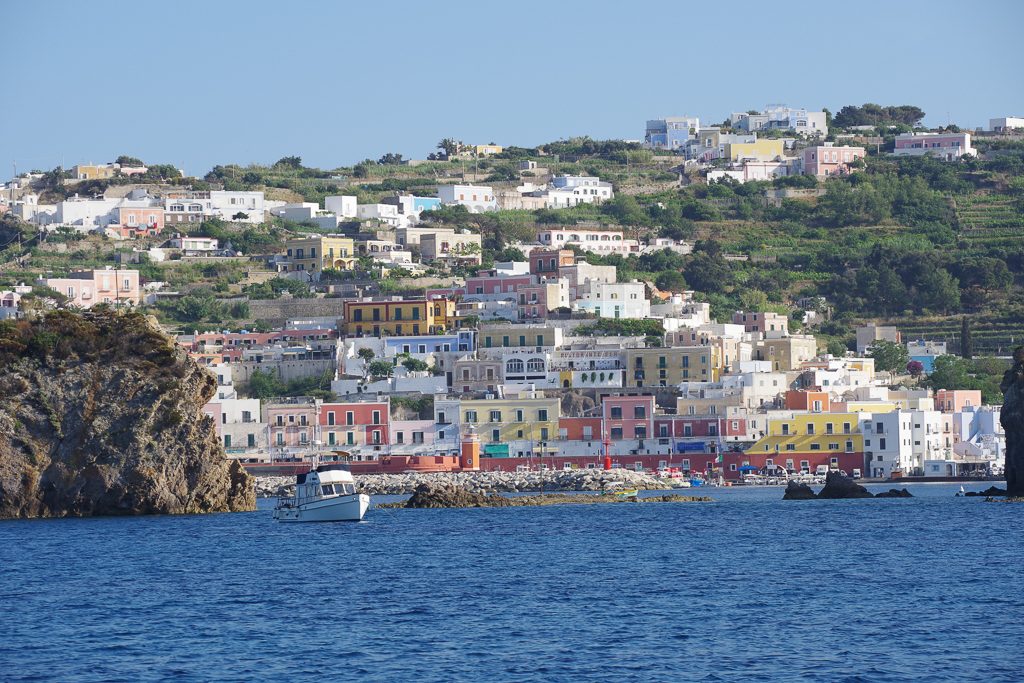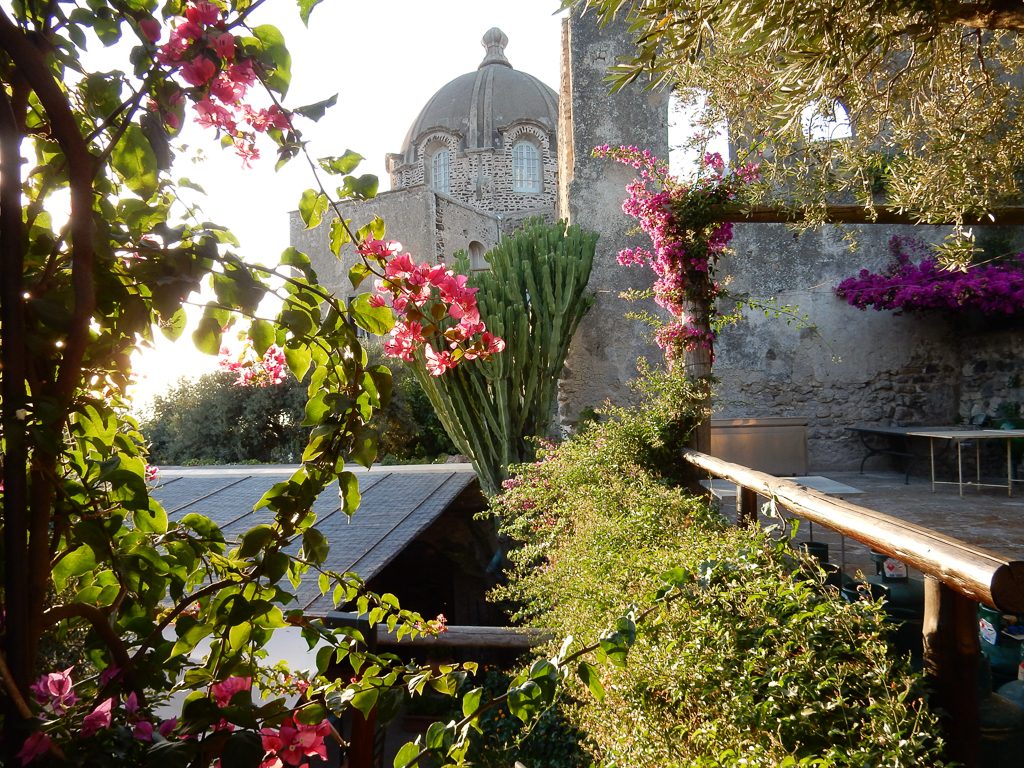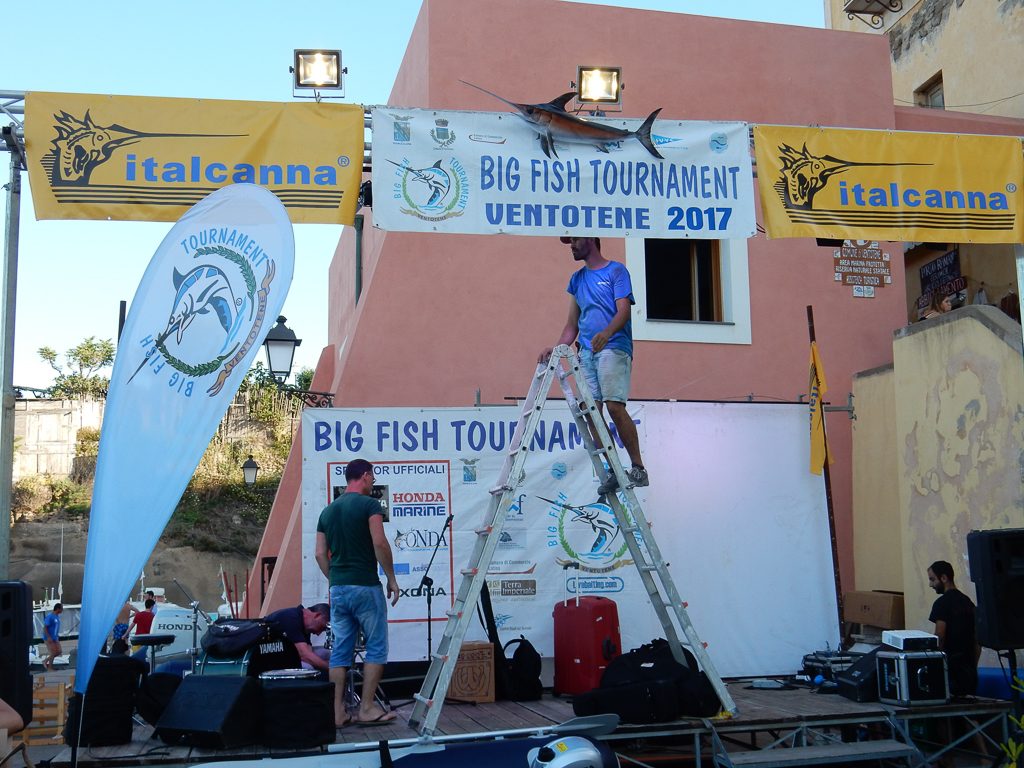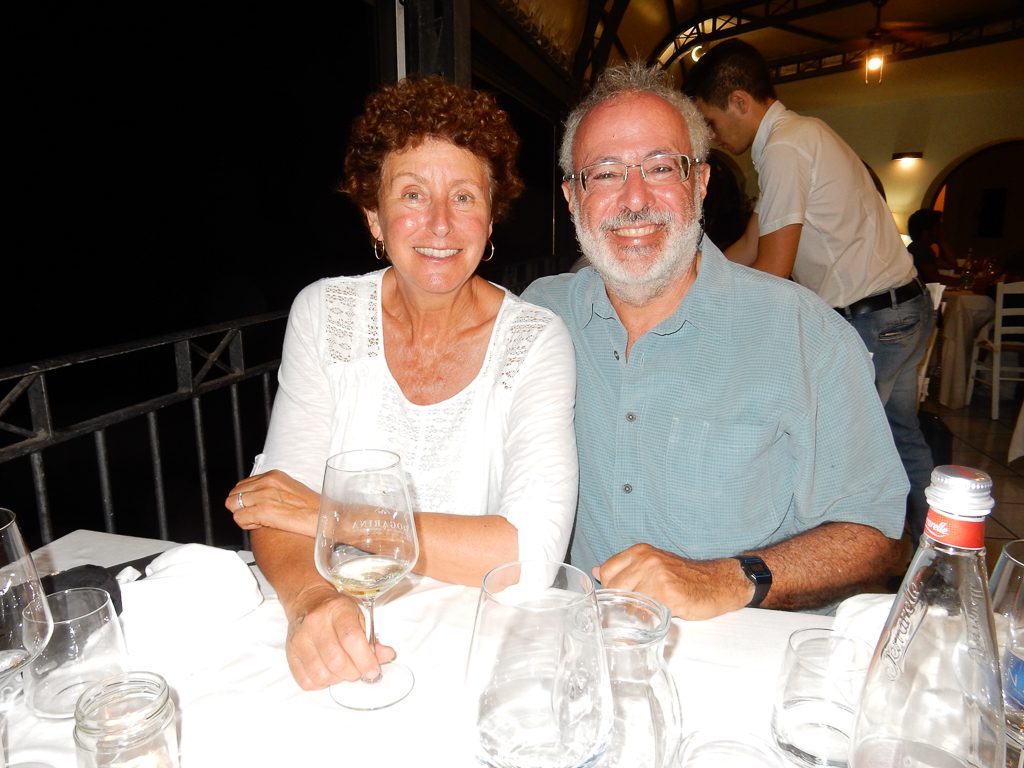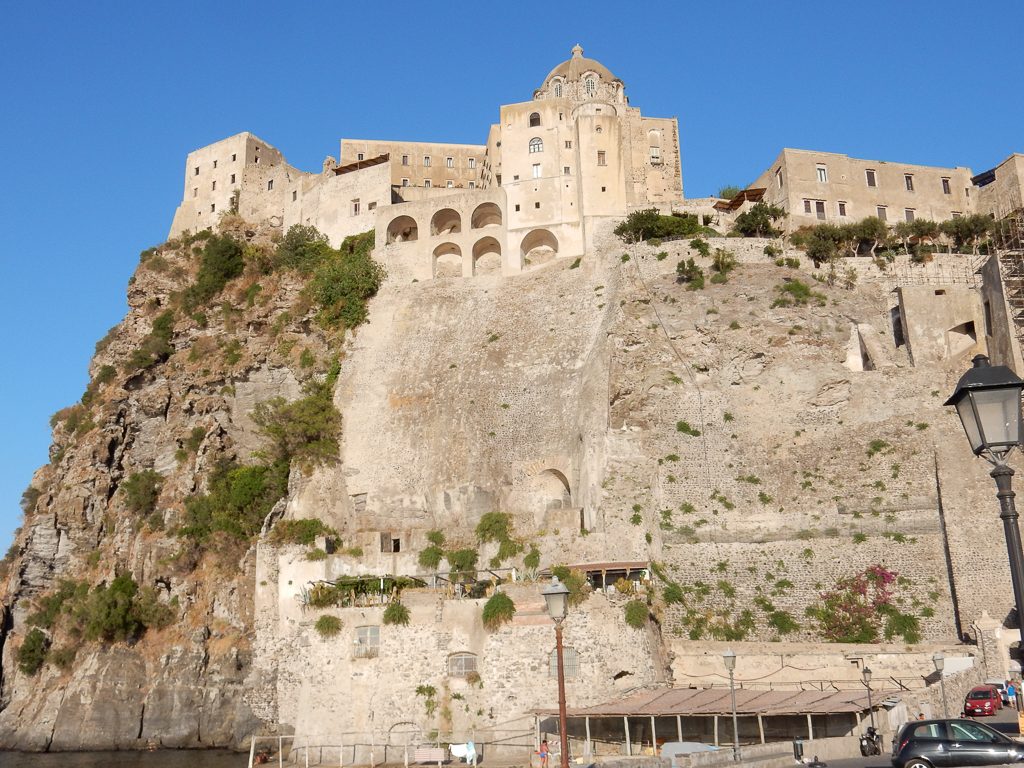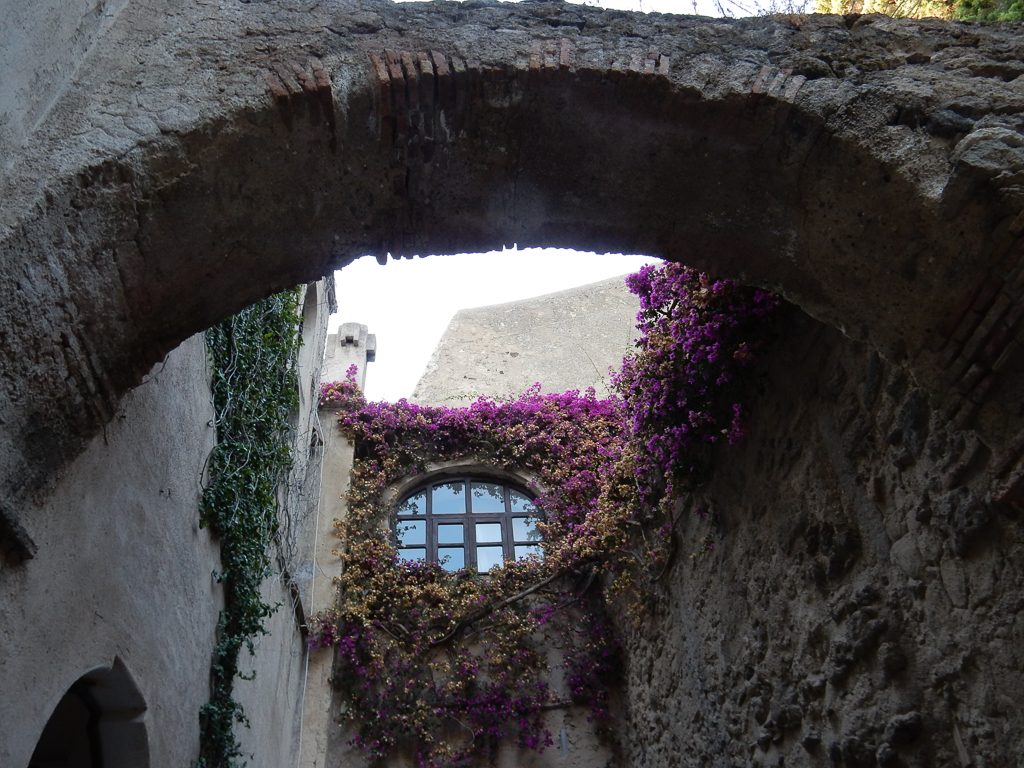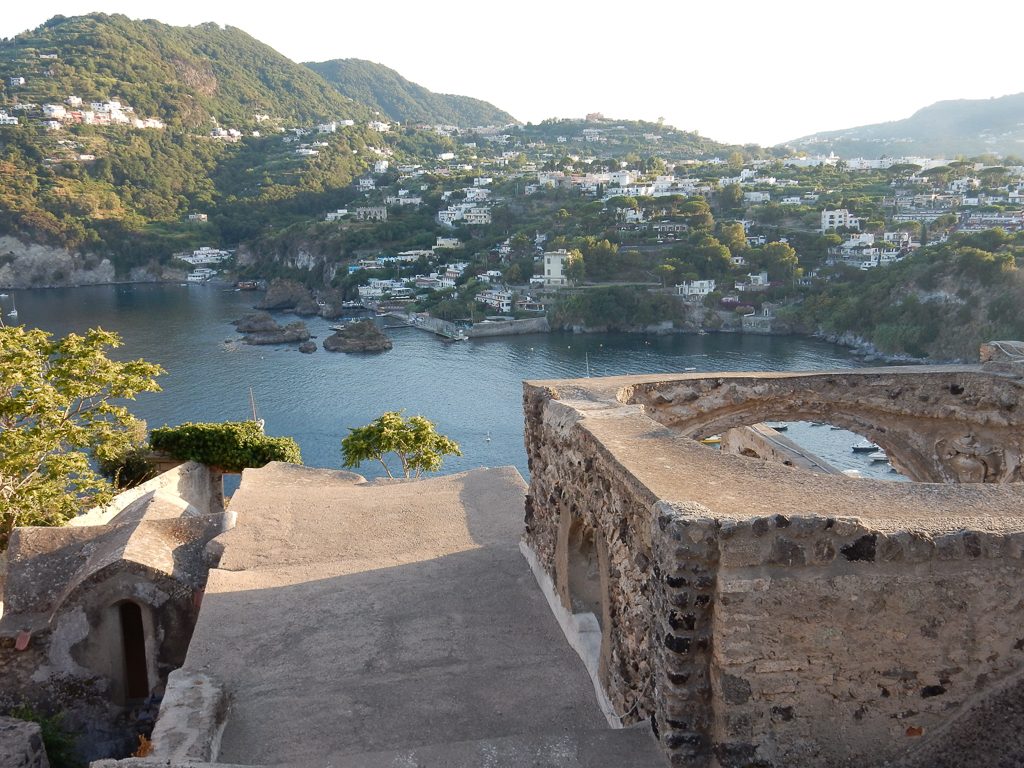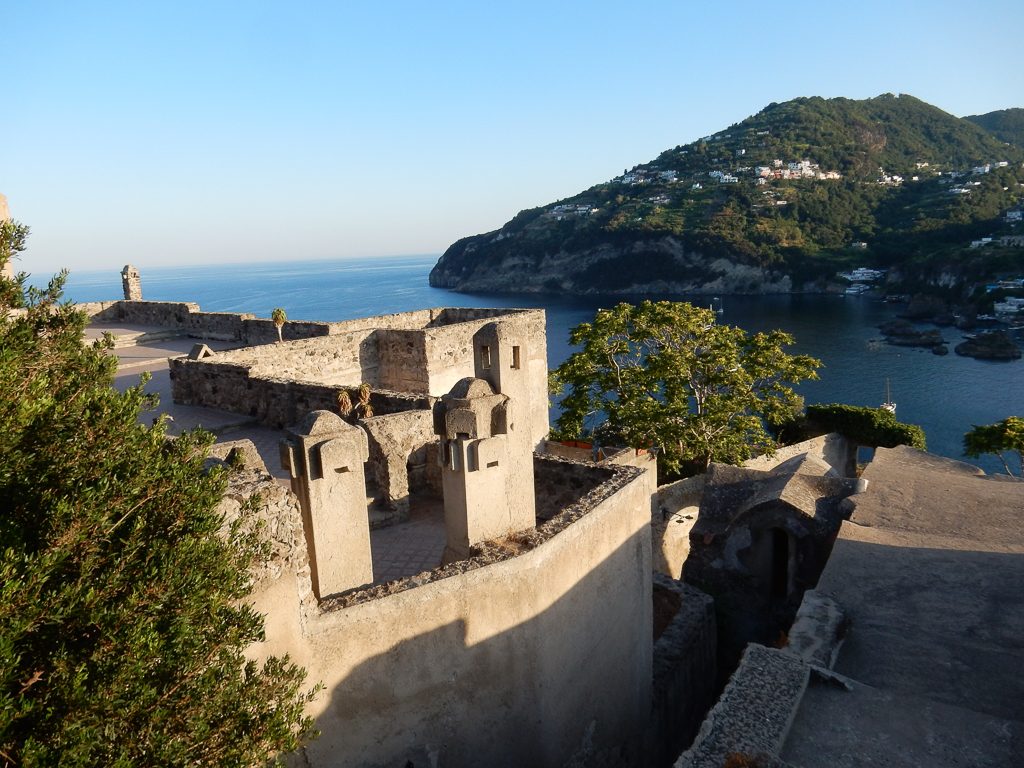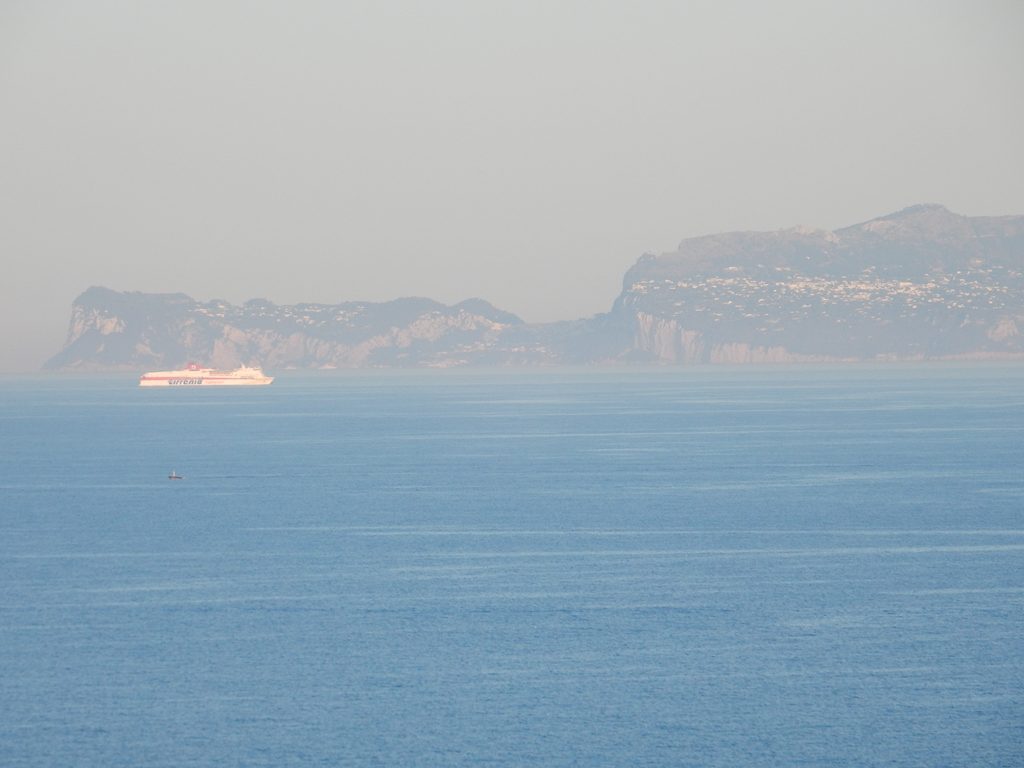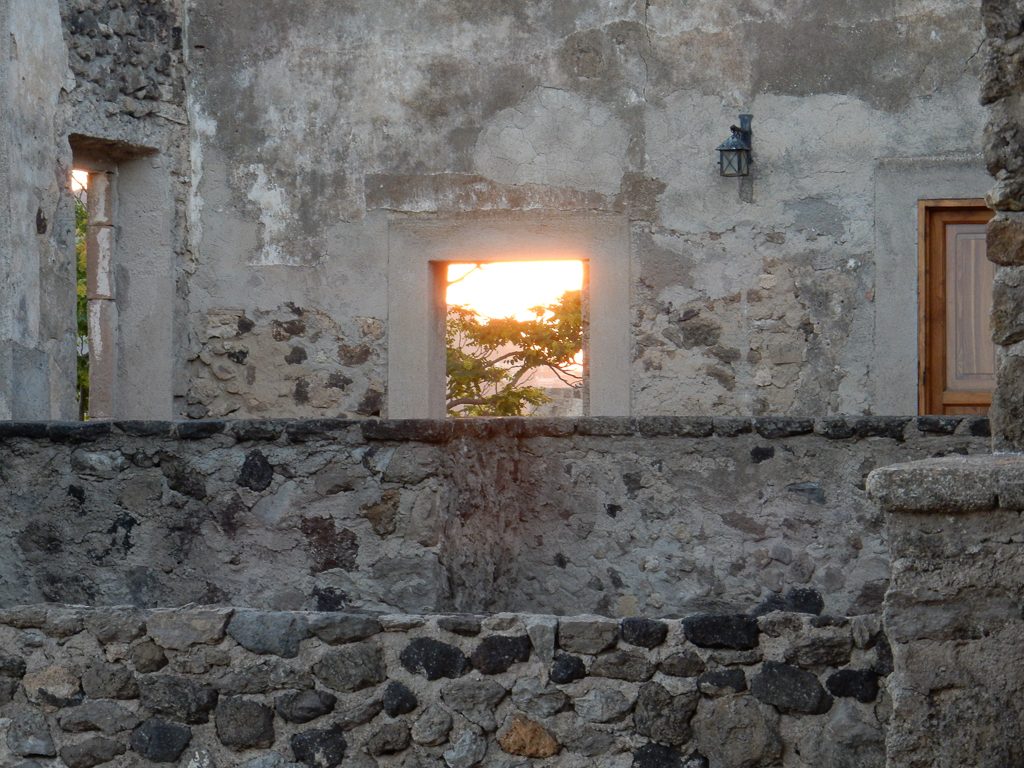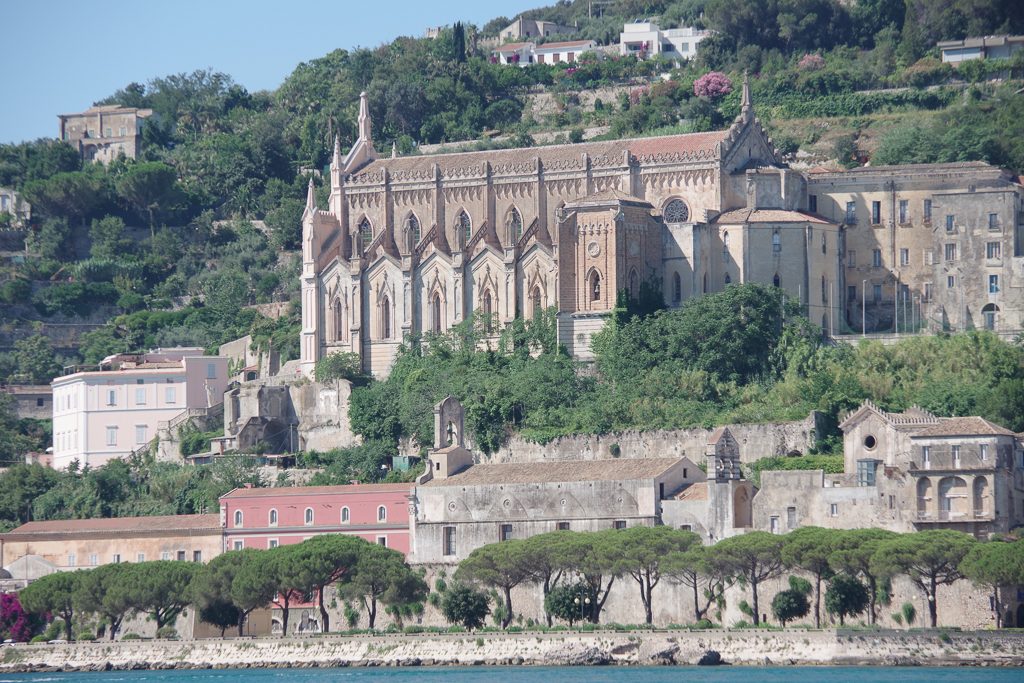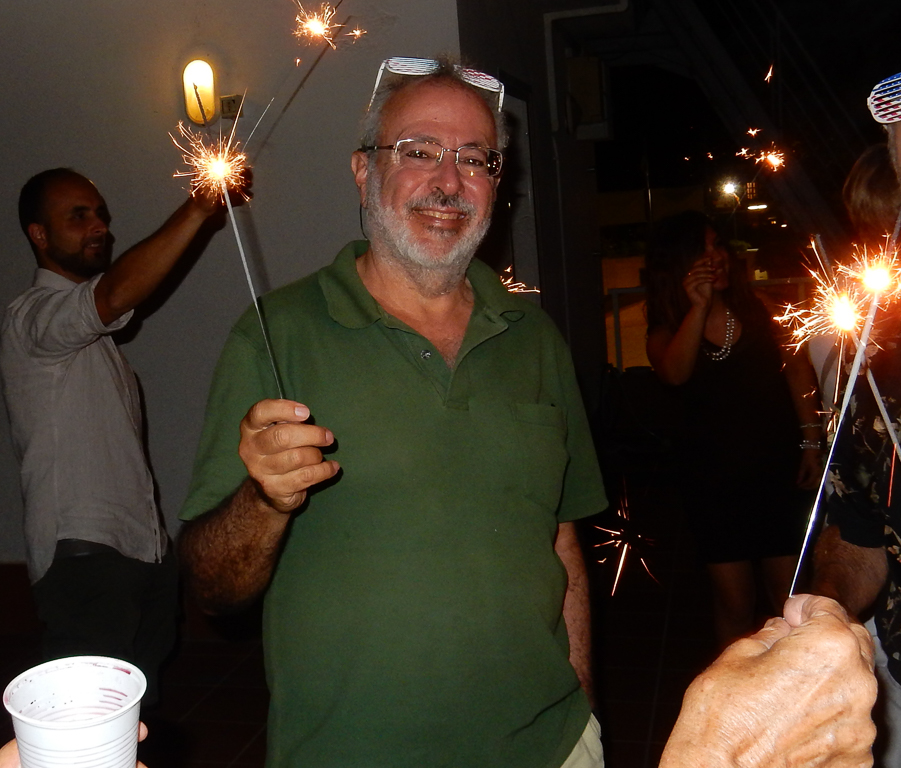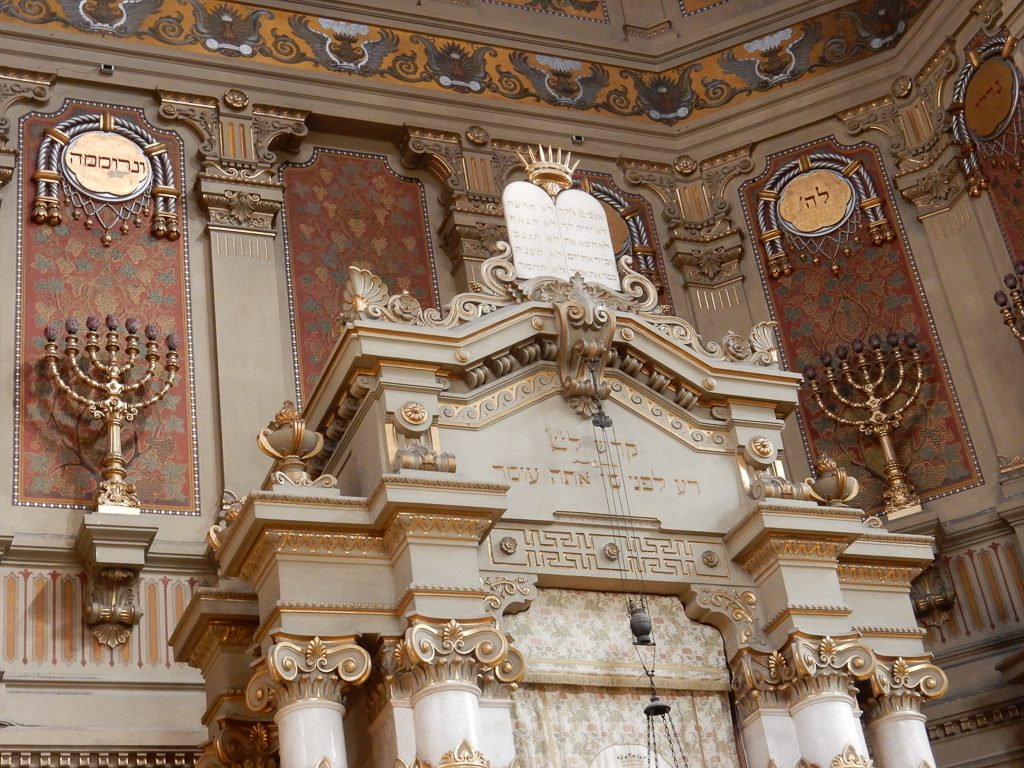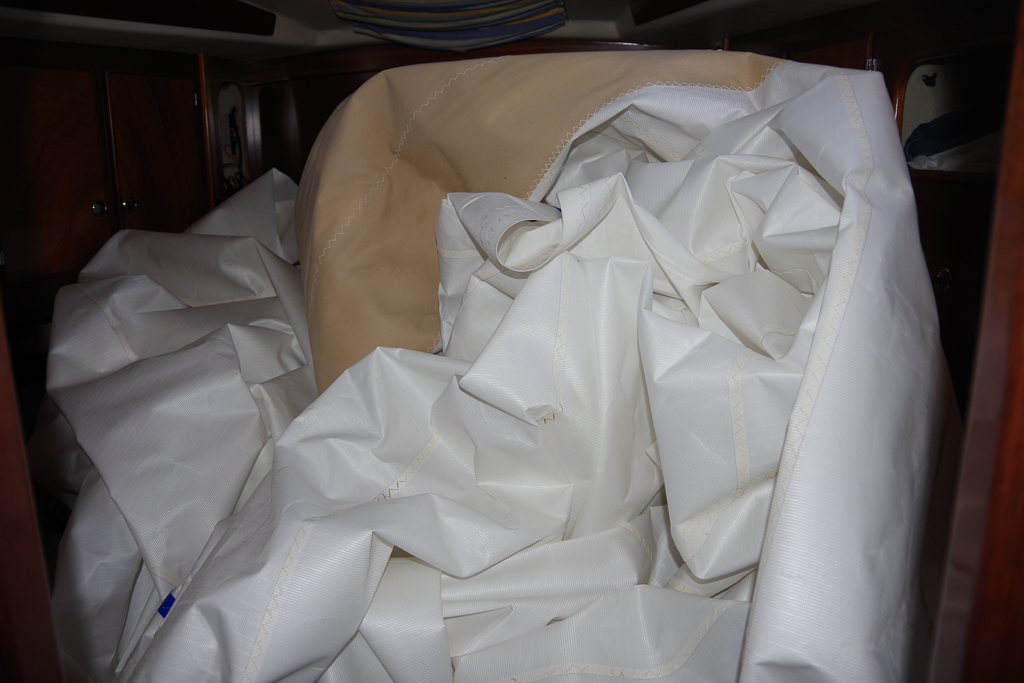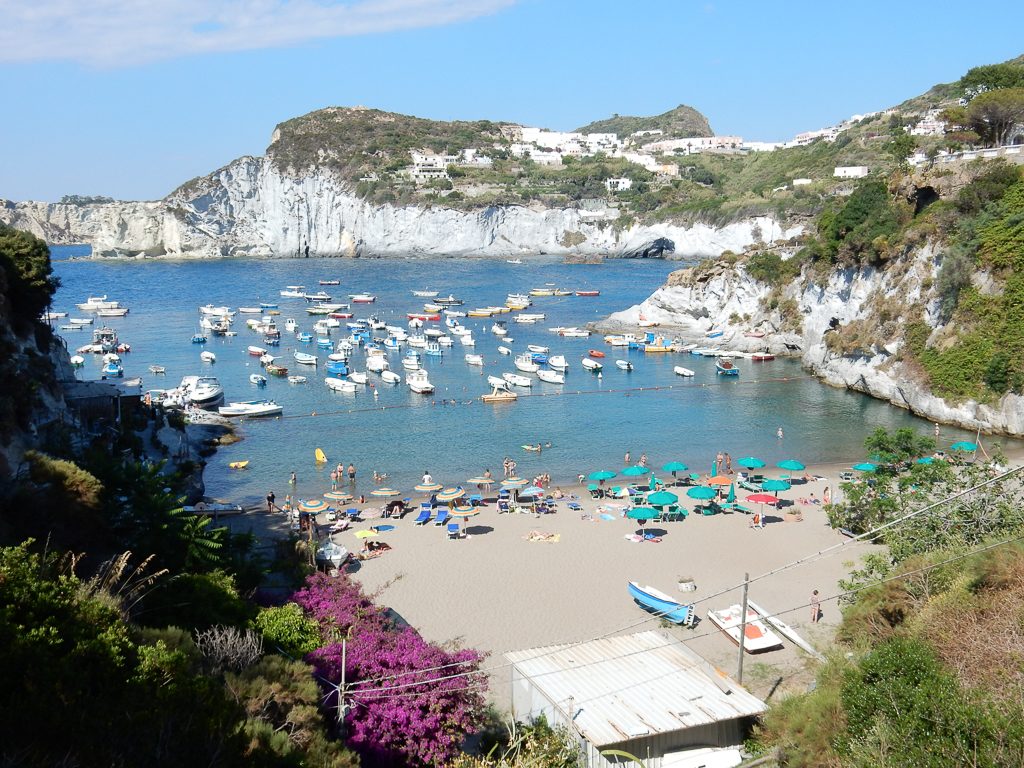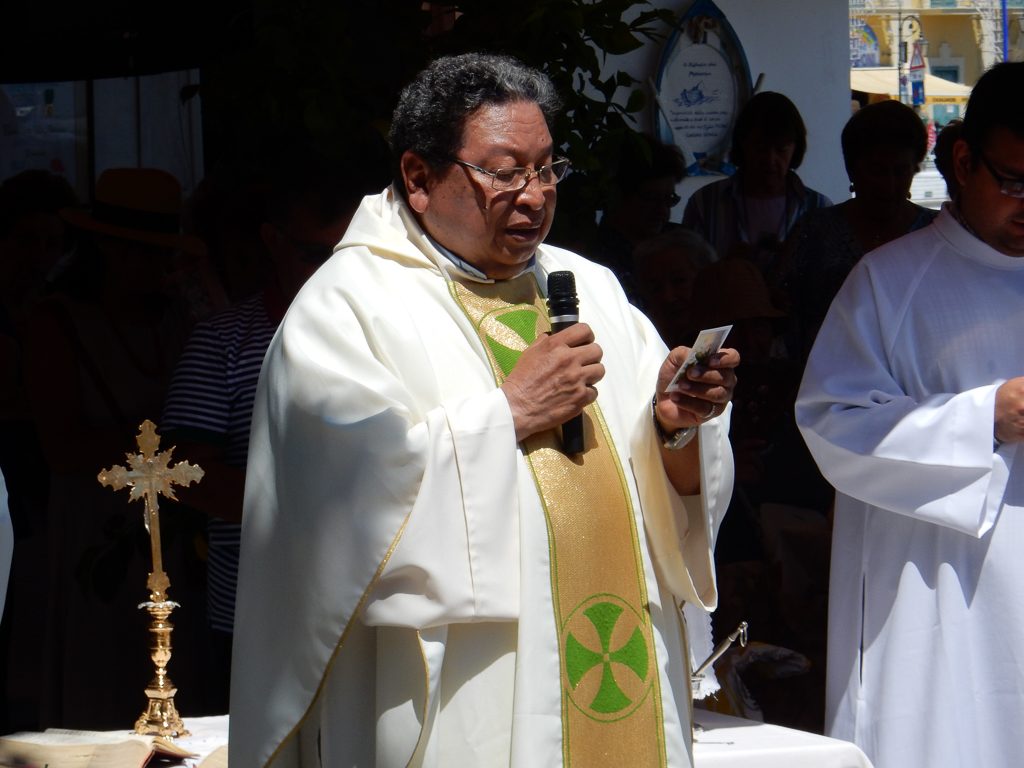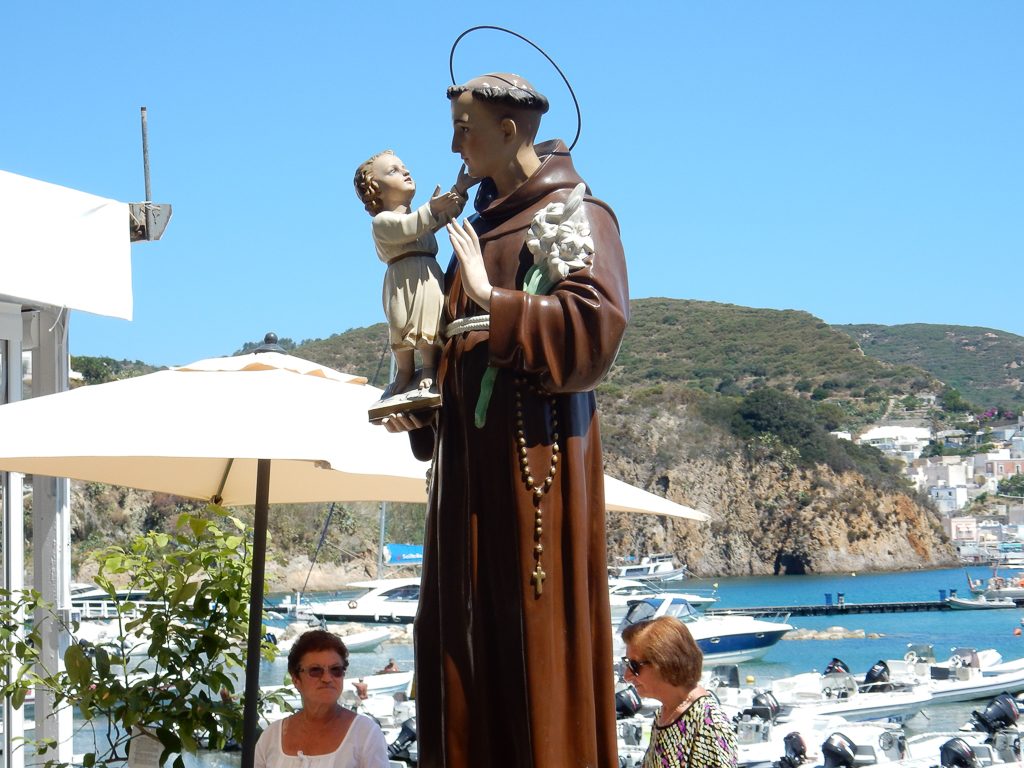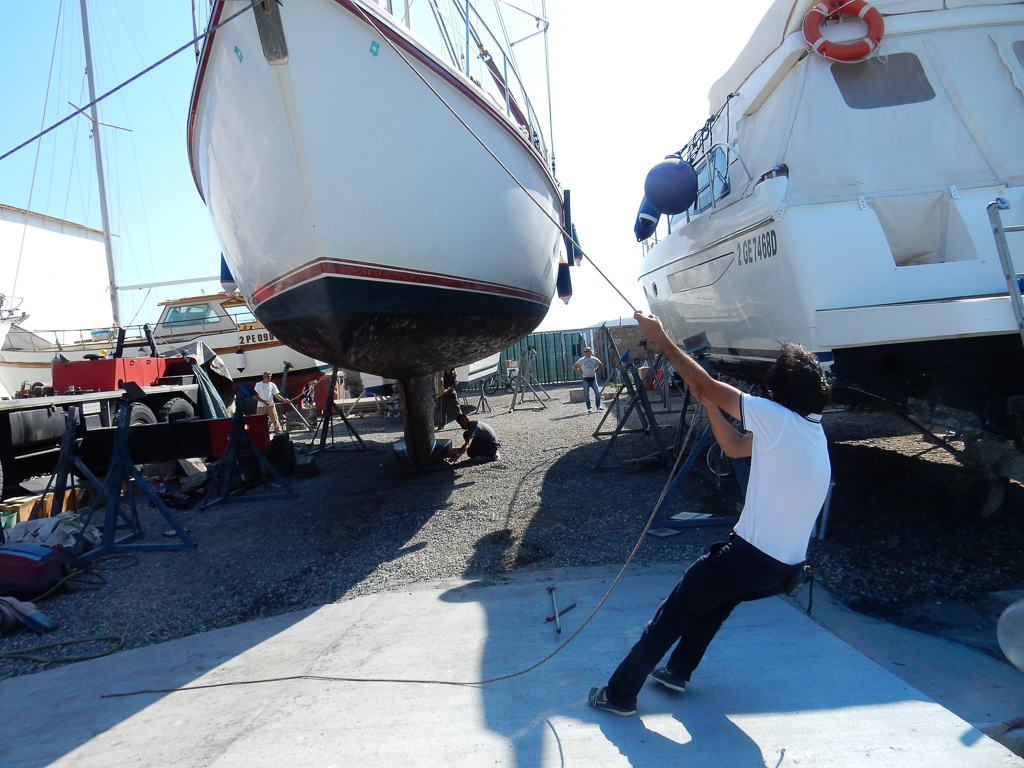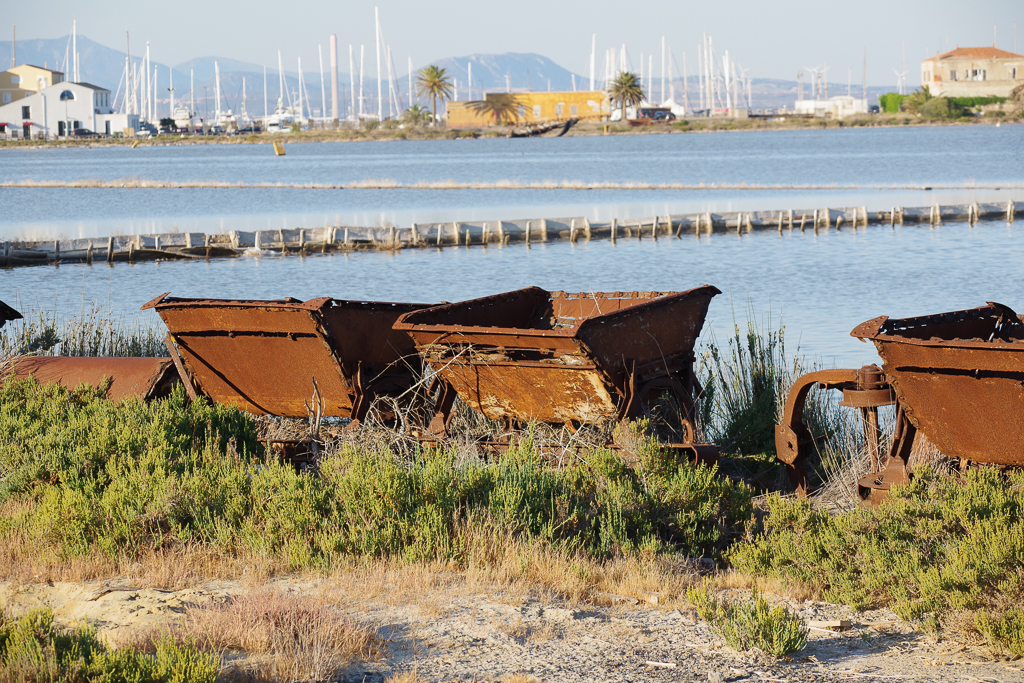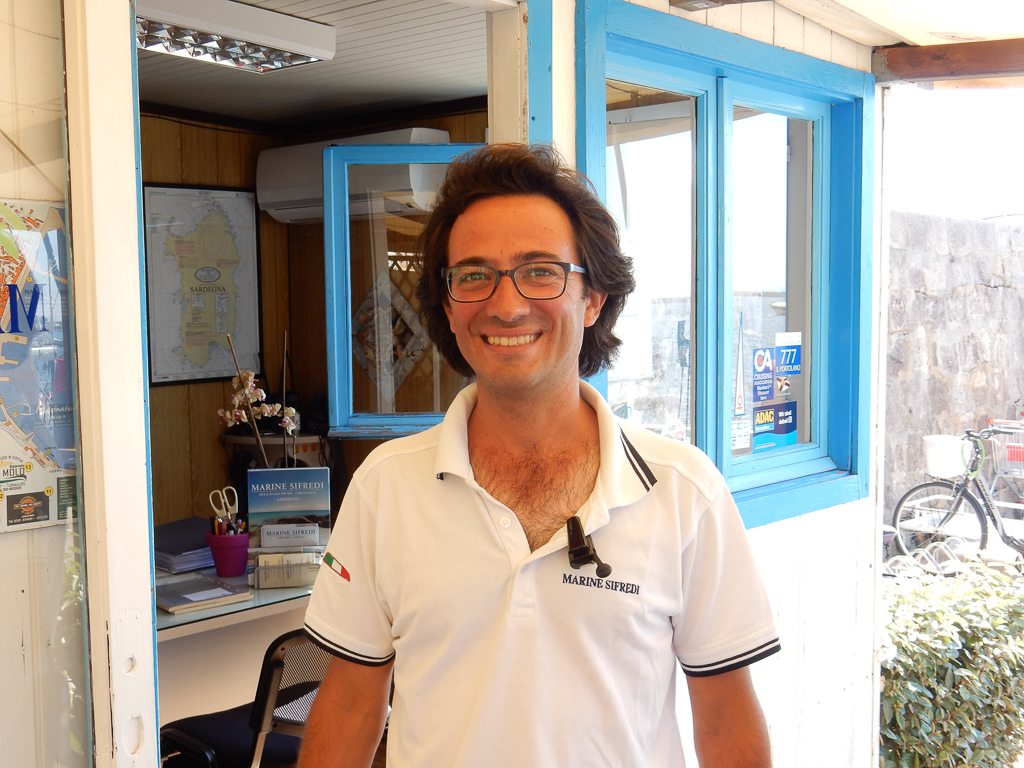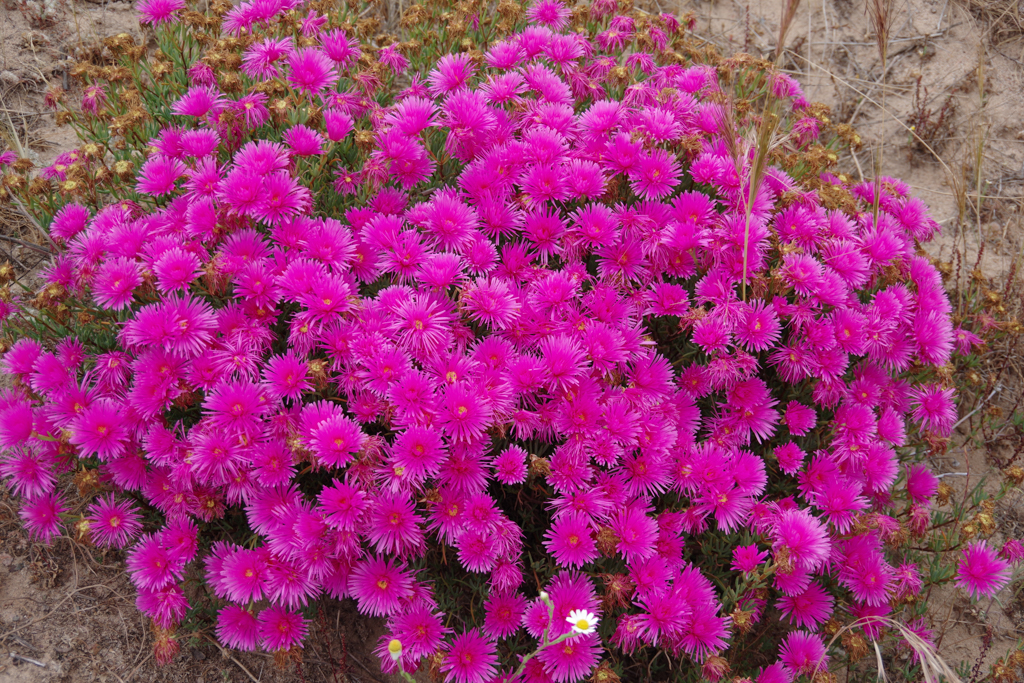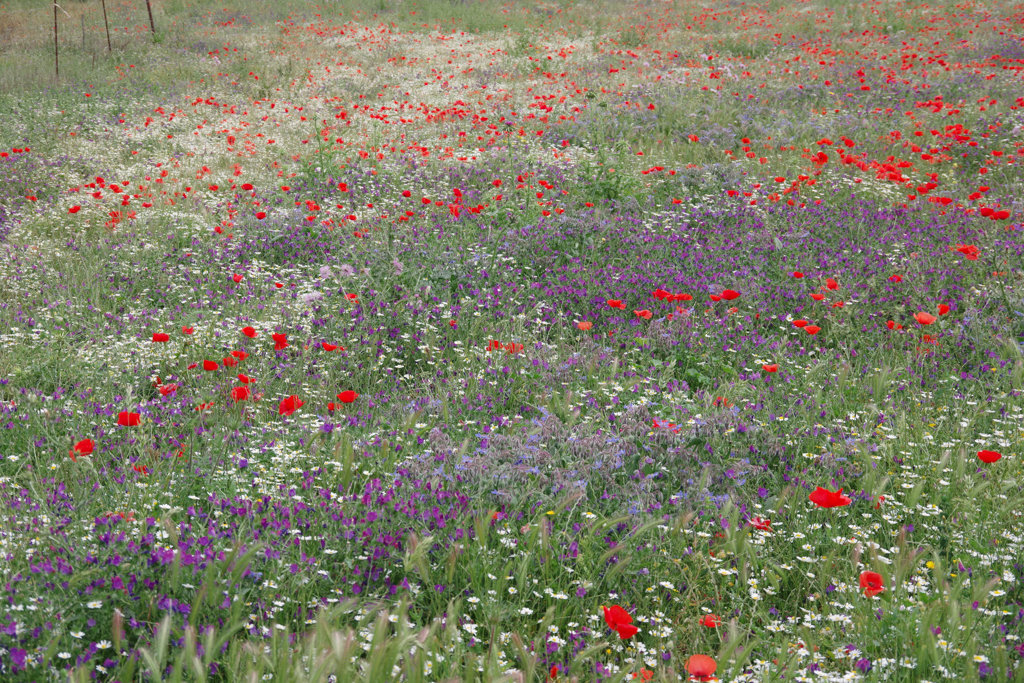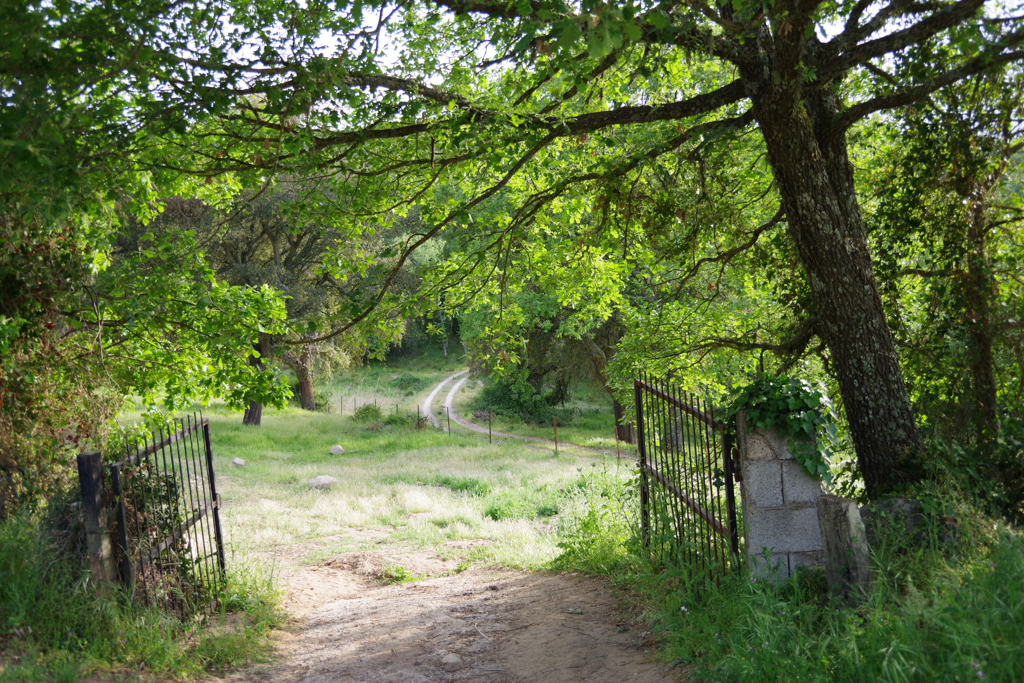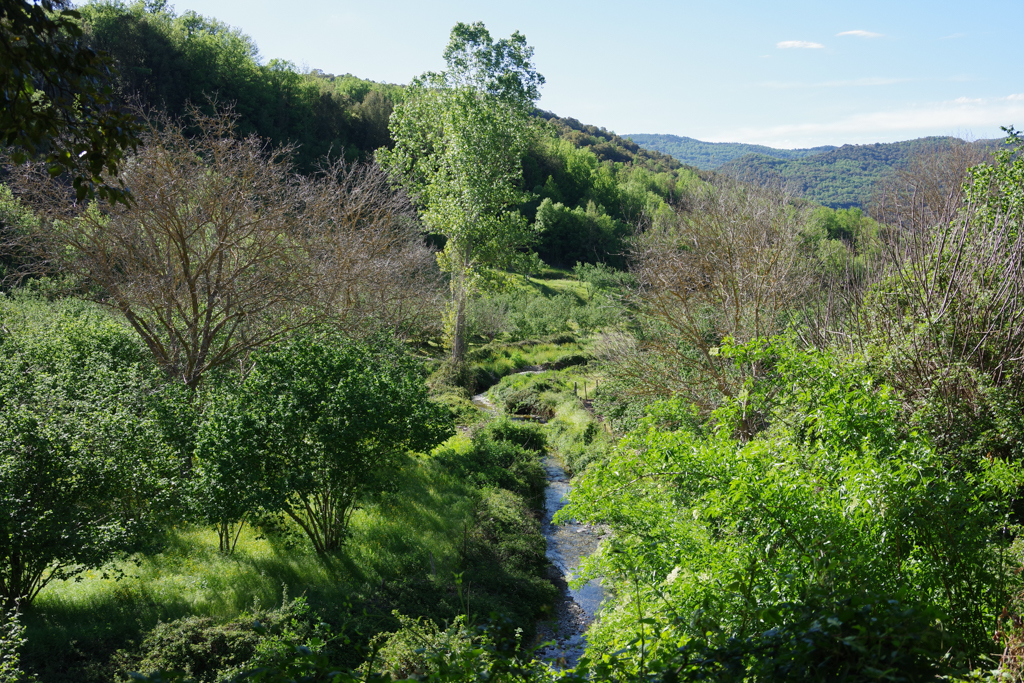
We could not wait for a forecast of good winds to cross the Tyrrhenian Sea any longer, so we left from Ponza Island on August 6 with a forecast of light winds and seas. Except for 90 minutes of sailing, we motored the whole 34 hours across to the west side of Capo Carbonara, Sardinia. We rested there overnight and then caught a nice breeze for sailing into the Marina del Sole in Cagliari. We stayed at Marina del Sole twice last year when we came to Cagliari to arrange our residency permits. It is a bit rundown but very friendly and way cheaper than the alternatives. In fact, we have become quite fond of the place.
We needed to come to Cagliari to do our clearance out of Italy. This process involves a trip to the Costa Guardia, where a very friendly young officer helped us with our paperwork. Followed by a trip to the cruise ship pier where the Polizia Frontiera is located. We loaded up on provisions that were delivered to the boat by the Issa Supermarket, bought diesel motor oil, filled up our diesel tank, and purchased five new fenders with blue fender covers made with Italian cloth. These are not cheap. These replace our 13 year old fenders that were oozing rubbery goo on the topsides. We also ate lots of sushi and Asian food. As we discovered last year, there are more Asian buffet restaurants than all other types of restaurants combined in the marina area.
We spent only three days in Cagliari. An enormous cold front was forecast to push south from the continent bringing strong winds from the north. We wanted to sail, not motor, so we left Cagliari on August 11 heading for Bizerte, Tunisia. It was a great sail in building northerlies for the first few hours, but when we got south of the tip of Sardinia we hit an area of large and confused seas that rolled the boat more strongly than we have experienced before. That lasted a few hours until we had just regular large following seas and strong winds. We needed to jibe a number of times during the night. It was hard to sleep at night while off watch and while on watch there was lots of freighter/tanker traffic to watch for as we had to cross the sea lanes that lead to the eastern Med and the Suez Canal. We came into the new marina at Bizerte in the morning of August 12 in strong winds and were directed to tie side-to to a concrete dock. It was a bit hair-raising “parallel parking†Sabbatical III between two other boats in winds over 20 knots. Even worse, our brand new fenders with the Italian cloth covers were getting ground into a rough concrete wall once we were tied up. I quickly rearranged things so that the 4 old fenders that we kept “just in case†took the weight of the boat, and were smashed flat, so as to spare the new ones.

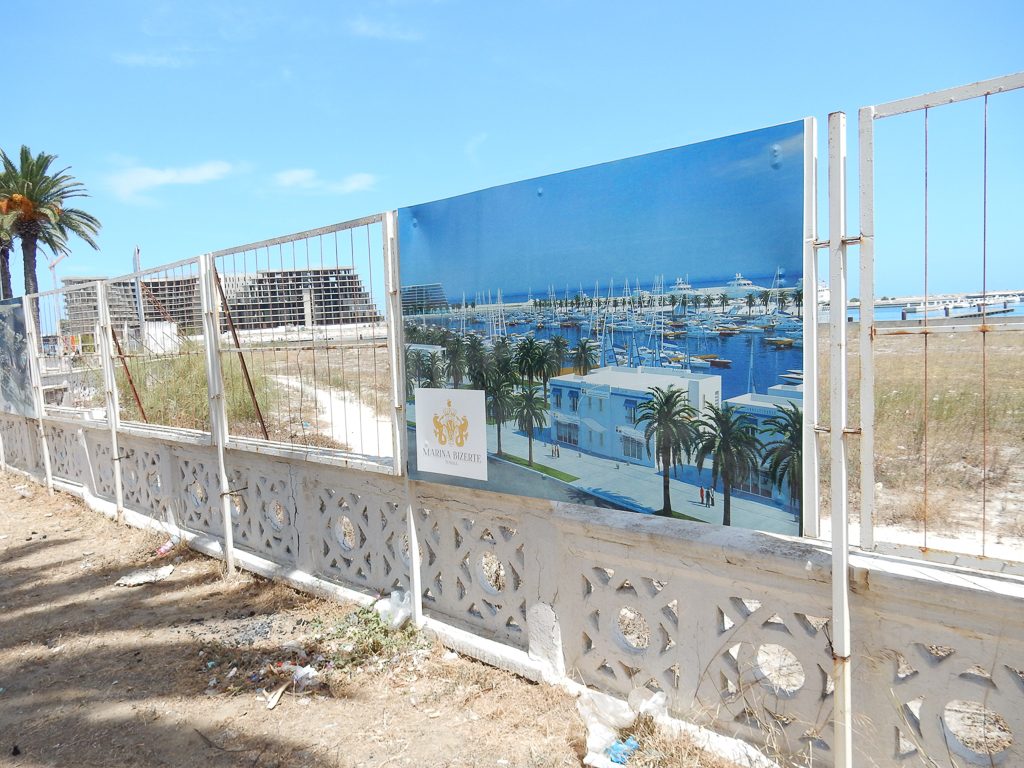




Tunisian Customs came aboard and did a thorough inspection, opening every cabinet in the boat. They were pleasant and professional. No baksheesh was requested or offered. The marina is part of a very large tourist development financed with Gulf money. Construction came to a halt with the start of the Arab Spring, and only the marina was mostly finished. The luxury hotel is just a shell of concrete and rebar. The Bizerte Marina, with only concrete docks, has room for 800 boats but there were only 30 or forty boats (mostly local) when we were there. It was a pleasant place. We had a watchman assigned to the 10 boats on our dock who came by 20 times a day to let us know that he was watching.
There is a very nice souk a few blocks away, and the best restaurant in town is at the edge of the marina. We only stayed three days. The primary purpose of our visit was to get the boat out of the EU before she was subject to a 20 percent value-added tax. We would have stayed a few days more but, starting on August 15, three days of winds from the east were forecast. This is exactly what we needed to sail to Mallorca, Spain. So off we went.
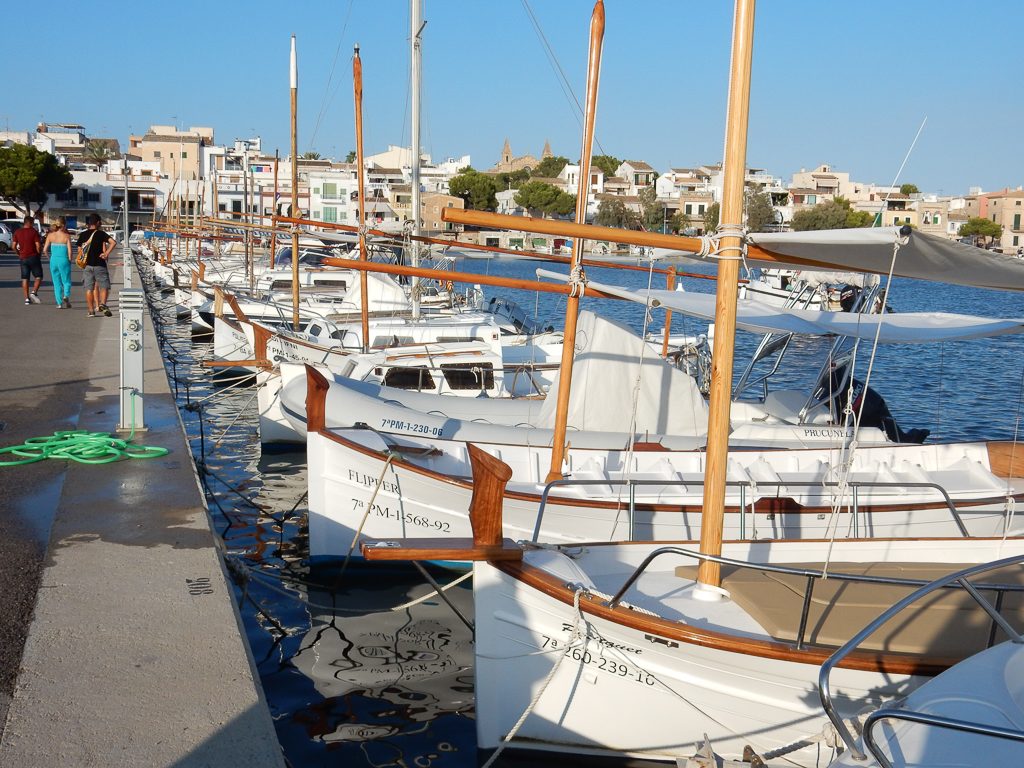
It was a very fine two and one-half day sail to Mallorca. We sailed more than 60 percent of the time (the wind died out the last day), and the seas were surprisingly comfortable. We came into Porto Colom on the southeast coast of this large island. With the help of Ben and Irene, we had reserved a mooring ball (no anchoring permitted). That was necessary since this is August, peak season in the Balearic Islands, and there are tourists and boats everywhere. Without a reservation, we would have been turned away. From the mooring in Porto Colom, it was a one minute dinghy ride to the main street where there was an upscale gastronomia/grocery store. The small town also had a number of restaurants, a self-service laundry, a bigger supermarket, a fruit and vegetable store, and a bus to Palma, the capital. After resting for as day, we went to Palma in a taxi that we shared with an Italian couple going to the ferry terminal. As it was, the Frontier Police are also at the ferry dock. The policeman was quite annoyed that we showed up on a Saturday morning but he quickly filled out a form, stamped it a few times, and Sabbatical III and us were now legally in Spain. Our 18 month clock for the value-added tax now went back to time zero. It was mid-morning and we were finished with our check-in so we wandered over to the Palma de Mallorca Yacht Club where an international classic yacht regatta was on hold for a few hours waiting for the winds to diminish. The classic wooden yachts were beautiful and each had lots of crew. We wandered around the old city (town population is 400,000) and found it charming. After a late tapas lunch, we took the bus back to Porto Colom. We stayed five nights in Porto Colom and thoroughly enjoyed the place.

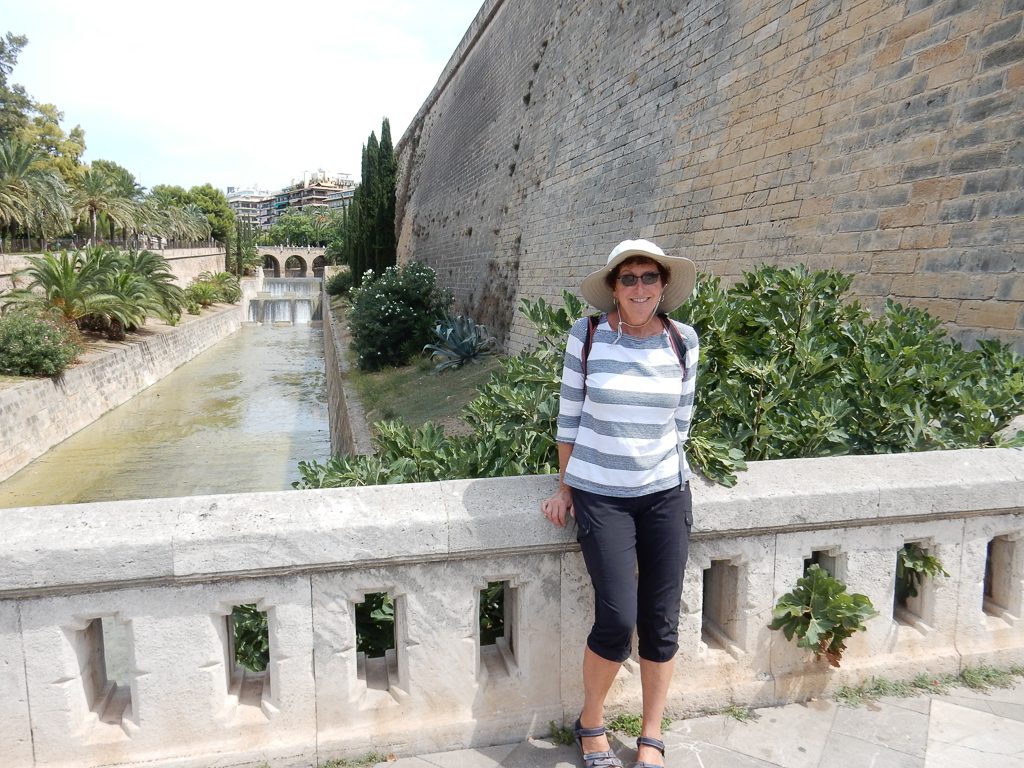

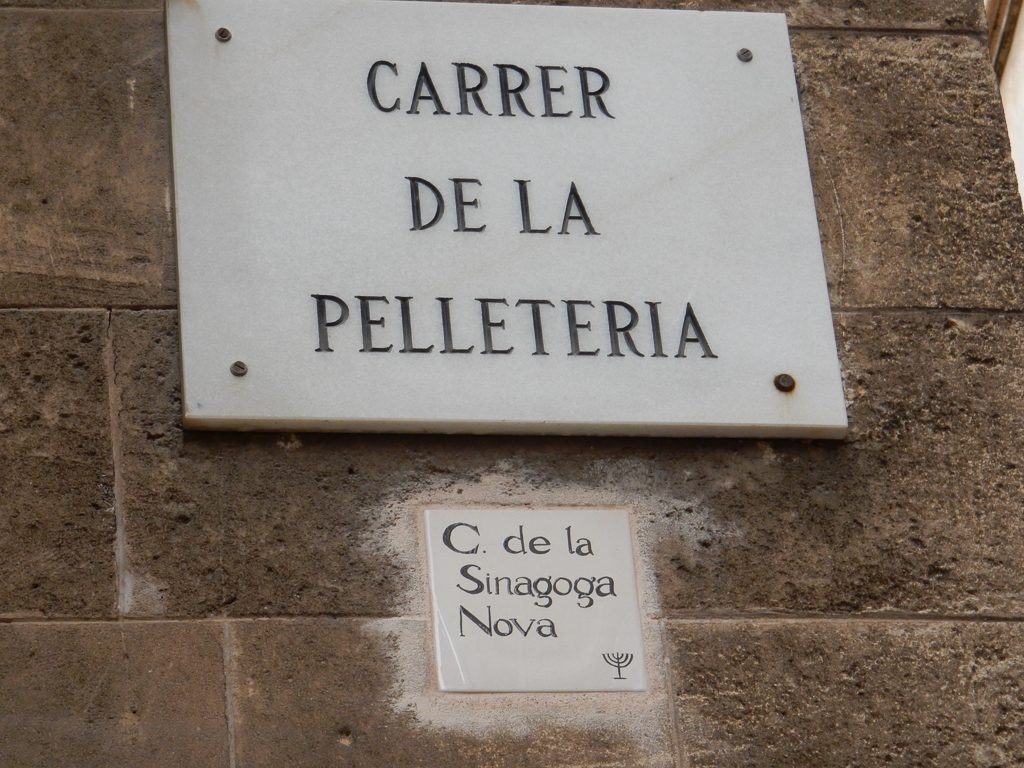


We are now anchored off of Plaja Es Trench, perhaps the most famous beach on Mallorca. Lots a boats here but most run off to marinas at dusk. The weather has been hot and sunny during the day but quite cool in the evening. More on Mallorca later.
M.

